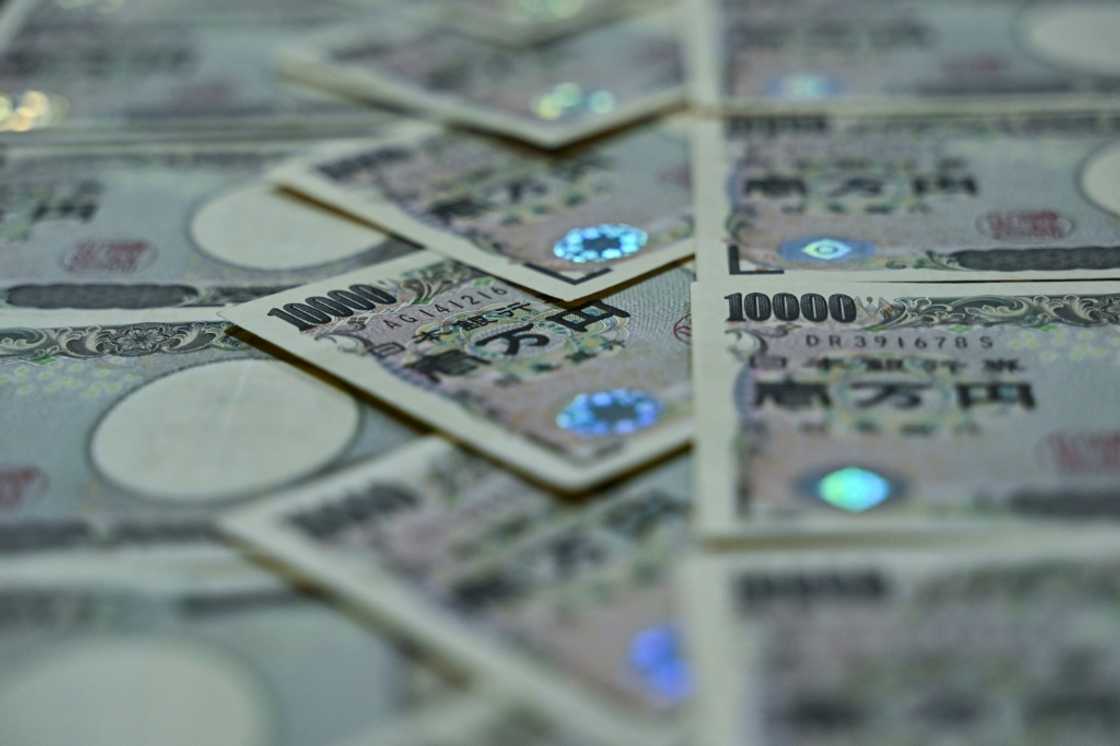Yen sinks to 150 per dollar, lowest since 1990

Source: AFP
PAY ATTENTION: Сheck out news that is picked exactly for YOU ➡️ find “Recommended for you” block on the home page and enjoy!
The falling yen hit 150 per dollar for the first time since 1990 on Thursday, driven down by the contrast between Japanese monetary easing and aggressive US interest rate hikes.
The currency has plunged from February levels of around 115 as the Bank of Japan sticks to its longstanding ultra-loose policies, designed to encourage sustainable growth in the world's third-largest economy.
At the same time the US Federal Reserve has sharply increased borrowing costs in an attempt to quell sky-high inflation fuelled by factors including the war in Ukraine.
The Japanese unit sank to as low as 150.08 per dollar, before easing back soon after.
Analysts say the yen will continue to slide as long as the two policies differ, with more dramatic Fed interest-rate hikes likely as US prices increase faster than expected.
And speculation is growing that Japan could move to prop up its currency again after spending 2.8 trillion yen in September (then around $20 billion) on an intervention that involves selling dollars and buying yen.
PAY ATTENTION: Click “See First” under the “Following” tab to see YEN.com.gh News on your News Feed!
Finance Minister Shunichi Suzuki called volatile fluctuations in forex markets "absolutely intolerable" on Thursday, reiterating verbal warnings that authorities will take an "appropriate response" to promote stability.
Earlier this week, Suzuki declined to confirm whether any unannounced "stealth" interventions had recently taken place.
"It's probably fair to say that... the Japanese government is engaged in a game of chicken with the market" on the yen, Jane Foley, head of FX strategy at Rabobank, told AFP.
"There isn't a limit," she said, explaining that in the short term, "interest rate differentials suggest there is a strong drag on the dollar-yen to go higher."
A weaker yen inflates profits for Japanese exporters, but can also weigh on the country's trade balance.

Source: AFP
Japan is heavily reliant on imported energy and also buys in other goods including much of its food.
September's intervention "managed to stabilise the dollar-yen rate for a while, because traders are frightened of intervention", which can cause them to lose money, said Foley.
But the effect of such interventions will be limited if the gap between Japanese and US monetary policy remains, she added.
"It's very unlikely that anything is going to change from policy at least until the spring," when key wage negotiations take place in Japan, she said.
Japan scrapped its Covid-19 border restrictions and reopened to tourists this month, and many visitors will find shopping, eating out and domestic travel a bargain thanks to the weak yen and years of stubbornly low inflation.
Prices are now rising in Japan, although at a slower pace than in other major economies.
In August, inflation came in at 2.8 percent, the highest level since 2014, in part because of soaring energy prices linked to the Ukraine war.
That is above the Bank of Japan's target for sustained two percent inflation, but it views the price increases as temporary and so has kept its easy-money policies in place.
New feature: Сheck out news that is picked for YOU ➡️ find “Recommended for you” block on the home page and enjoy!
Source: AFP



